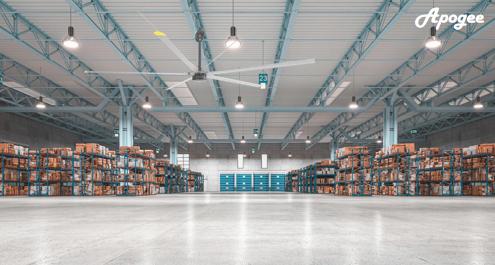Warehouse cooling systems, specifically High Volume Low Speed fans (HVLS fans), can significantly save money through various mechanisms:
Energy Efficiency: HVLS fans can effectively circulate air in large spaces using minimal energy. By reducing the reliance on traditional air conditioning systems, these fans can lower electricity costs.
Temperature Regulation: Industrial HVLS fans help maintain uniform temperatures throughout the warehouse by preventing hot air from accumulating near the ceiling and cold spots near the floor. This can reduce the overall cooling load and subsequently save on cooling expenses.
Employee Comfort: By improving air circulation and comfort levels, HVLS fans can contribute to increased productivity and reduced absenteeism, impacting labor costs positively.A cooler and more comfortable working environment can lead to increased productivity among warehouse employees, ultimately contributing to cost savings.
HVAC Optimization: When HVLS fans are used in conjunction with existing HVAC systems, they help distribute conditioned air more efficiently, potentially reducing the wear and tear on these systems and prolonging their lifespan.
Reduced Condensation: By preventing condensation and moisture buildup in the warehouse, HVLS fans can help preserve the integrity of stored goods, reducing potential damage and replacement costs.
Maintenance Costs: High-quality warehouse cooling fans often require minimal maintenance, reducing the long-term costs associated with upkeep and repairs.
Air Quality: Effective air circulation can help prevent stagnation and improve indoor air quality, potentially reducing costs related to air purification and ventilation systems.
Investing in HVLS fans for warehouse cooling represents a cost-effective solution that not only saves money on operational expenses but also contributes to a more comfortable and productive working environment. The power consumption of an HVLS (high-volume, low-speed) fan typically depends on factors such as its size, speed settings, and motor efficiency. HVLS fans are designed to be energy-efficient and use much less power compared to traditional high-speed fans. The power consumption for HVLS fans can range from a few hundred watts to a few kilowatts, but for specific details, it’s best to refer to the product specifications provided by the manufacturer or consult with an expert in the field.
Post time: Dec-20-2023


